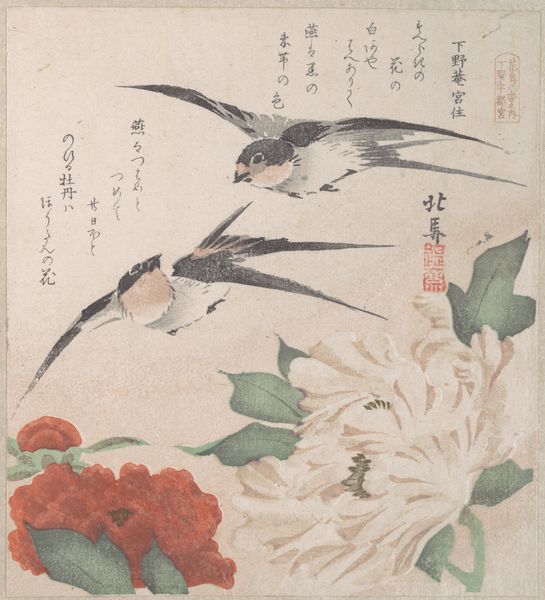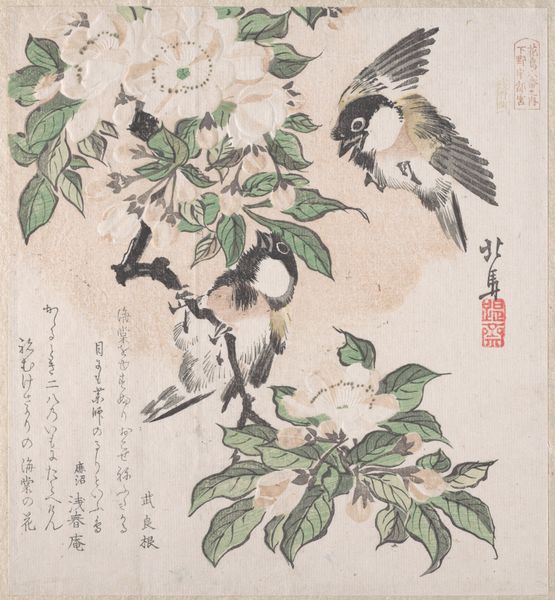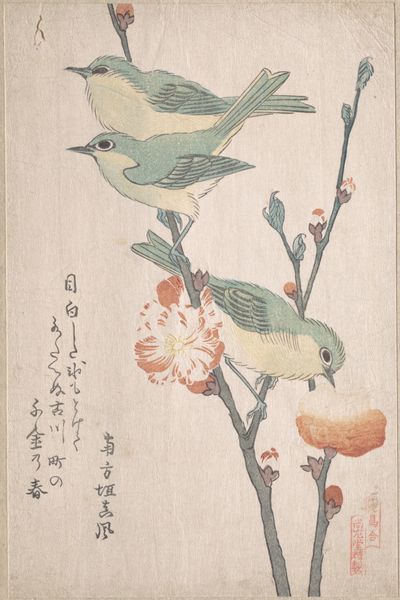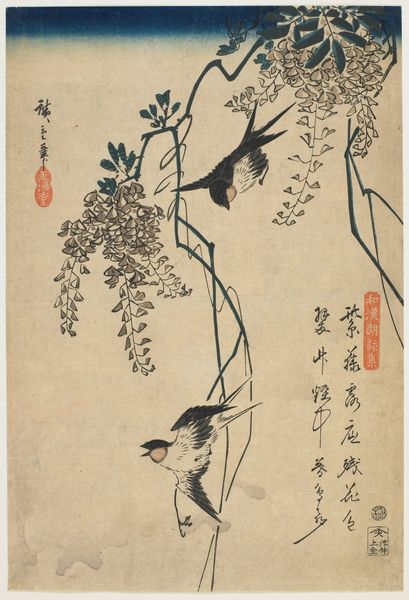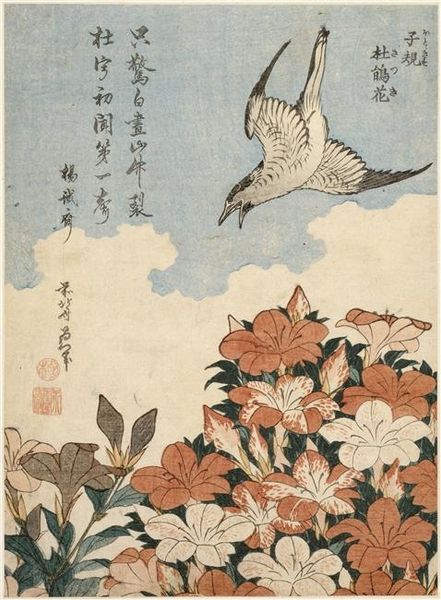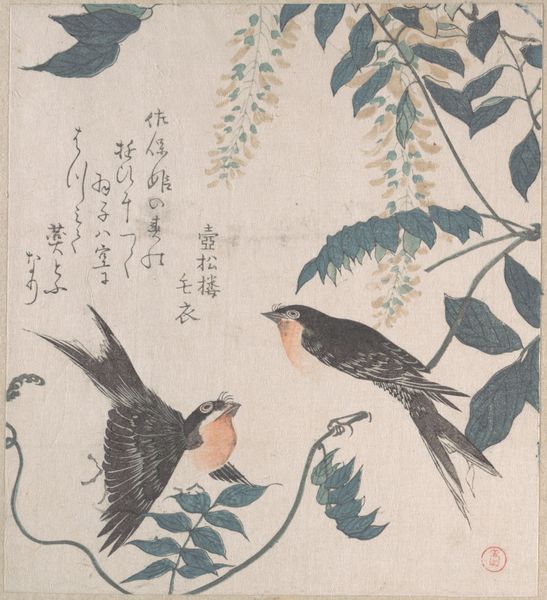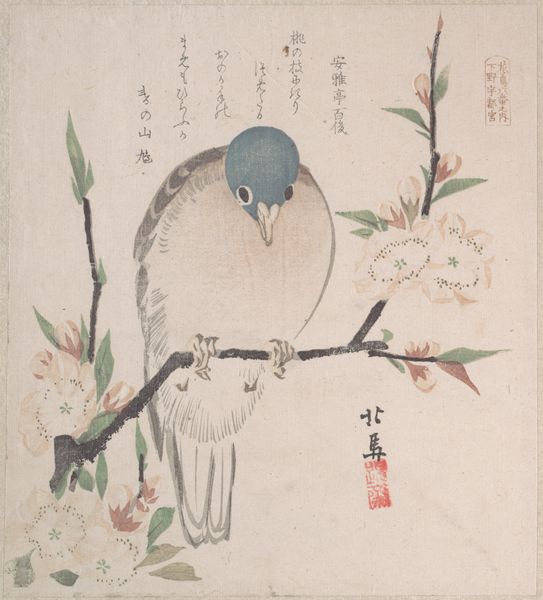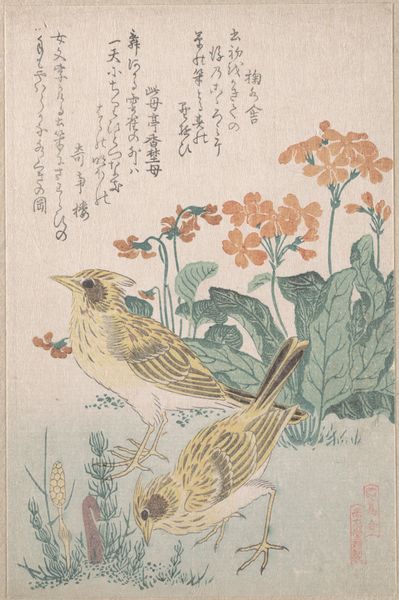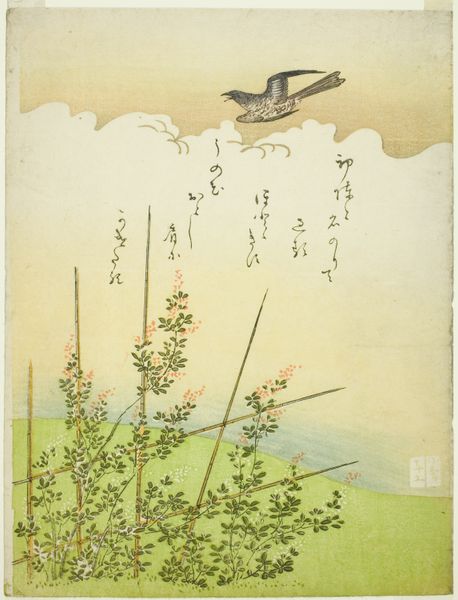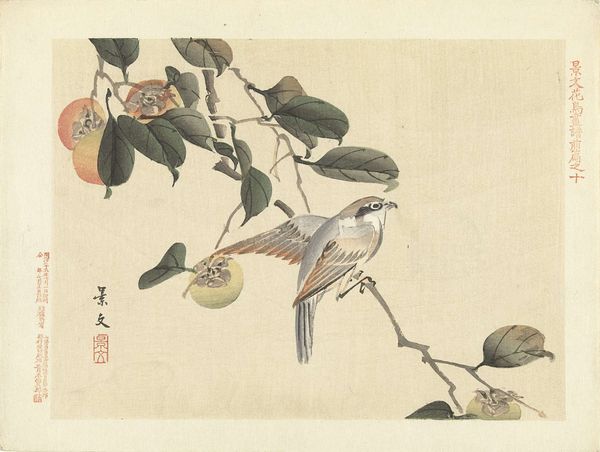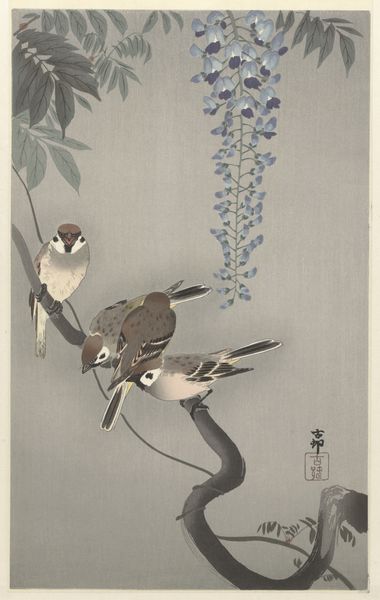
Roses and Bamboo with Nightingale 19th century
0:00
0:00
print, ink, woodblock-print, woodcut
# print
#
asian-art
#
landscape
#
bird
#
ukiyo-e
#
ink
#
coloured pencil
#
woodblock-print
#
woodcut
Dimensions: 8 5/16 x 7 5/16 in. (21.1 x 18.6 cm)
Copyright: Public Domain
Curator: What a charming print. This is "Roses and Bamboo with Nightingale," a 19th-century woodblock print by Teisai Hokuba. It's currently held in the collection of the Metropolitan Museum of Art. Editor: My first thought? Serenity. It’s a quiet composition; the colors are so muted, almost whispering to you. The way the bamboo stalks frame the nightingale creates such a still moment. Curator: Yes, and it encapsulates many aspects of the Ukiyo-e tradition. Think about what those symbols represent culturally. The rose, although western, evokes notions of beauty, but together with bamboo it might also represent resilience in that particular culture. Editor: Resilience, definitely. Bamboo bending in the wind is a powerful symbol of that. And consider the placement. It almost feels as if the artist intentionally contrasted the delicacy of the roses with the bird, a living thing against the somewhat rigid lines of bamboo, or vice-versa. Curator: The nightingale, singing… is its song one of joy, or perhaps longing? Bird imagery has consistently held different connotations across art, cultures, eras. Often, they stand for freedom, the soul, transition. Is this nightingale’s song connected to nature itself? What are we missing since we are just watching and not hearing this melody? Editor: What are we missing indeed? Also, given that many ukiyo-e prints were produced and consumed within a specific socio-political context, I’m also intrigued by what elements of resistance or social commentary could be hidden within what seems to be a purely decorative scene. Curator: Intriguing thought, viewing seemingly "purely decorative" arts as forms of veiled protest, is what makes these historical art works have continuity for future audiences. This image can still teach us today and help us question established traditions, to reimagine the natural world and reflect human experience through imagery. Editor: Absolutely. Examining such imagery invites a broader dialogue between past and present. Curator: It's about acknowledging that images are always coded with cultural knowledge. I wonder how its reception would vary across different communities. Editor: Precisely. It challenges us to become more culturally aware viewers.
Comments
No comments
Be the first to comment and join the conversation on the ultimate creative platform.


